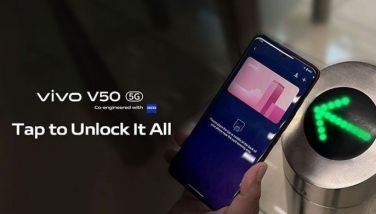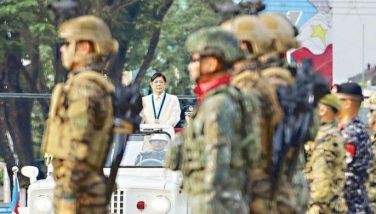On flags and anthems
Flag Day used to be celebrated on October 30 because that was when the Americans allowed Philippine flags to be publicly displayed way back in 1919. But for historical reasons, President Macapagal changed the date of the celebration from October 30 to May 28. The new date went farther back into history for May 28 marked the first Filipino victory against Spain after General Emilio Aguinaldo’s return from exile in Hong Kong. The battle lasted only five hours and 270 Spanish marines surrendered with all their arms because they had no ammunition. Aguinaldo would describe the battle in his book (True Version of the Philippine Revolution): “The battle raged from ten in the morning to three in the afternoon, when Spaniards ran out of ammunition and surrendered, with their arms, to the Filipino revolutionists, who took their prisoners to Cavite…” In the aftermath of that victory, and to great applause, the Philippine flag was raised for the first time. It was the victory at Alapan that would set the stage for the free Philippine republic.
Over a self-proclaimed free and independent nation, the flag was unfurled on June 12, 1898. It was said that the colors red, white and blue were patterned after the American flag. At that time, the American flag was called, “the red, white and blue” and the Filipino flag was the “red, white and blue with the sun shining through.” The triangle in our flag represented the emblem of the Katipunan Society, but also referenced the rallying cry of the French Revolution — liberty, equality and brotherhood. It was sewn in five days in Hong Kong by Marcela Agoncillo, her daughter Lorenza and a niece of Jose Rizal (the daughter of his sister Luisa) Delfina Herbosa Natividad. The design was provided by Emilio Aguinaldo. The original flag has never been recovered, lost after it was flown in Malolos and during the retreat to the North.
In Kawit, Aguinaldo lacked the second most important symbol of a nation — a national anthem. So he called Julian Felipe, who was the organist of the church of Cavite and asked him to compose our national anthem. Felipe had a deadline of one week. On June 12, 1898, Aguinaldo declared our independence and introduced both our national flag and our national anthem.
The start of our national anthem is reminiscent of the Spanish Marcha Real. Felipe said that was intentional because he wanted our anthem to have historical continuity. The middle portion was obviously influenced by Verdi’s Triumphal March, which was first played when the Suez Canal was inaugurated, which by coincidence happened the same year Aguinaldo was born. The concluding part of our national anthem was also obviously inspired by the opening chords of the French National Anthem La Marseillaise.
On March 6, 1965, President Diosdado Macapagal proclaimed May 28 as National Flag Day. May 28 was chosen because on that day in 1898, victorious Katipuneros carrying the Filipino flag that had arrived from Hong Kong scored a resounding victory against the Spaniards. This was in-line with other historically respectful measures that we undertook in during the Macapagal administration.
We believe that Flag Day should be commemorated with a display of the Philippine flag from May 28 to June 12. It was also during the presidency of Diosdado Macapagal that we changed the celebration of our Independence Day from July 4 to June 12. In short, our Independence Day was when the Filipino people proclaimed it and not when Americans “granted it” decades later.
- Latest
- Trending



























